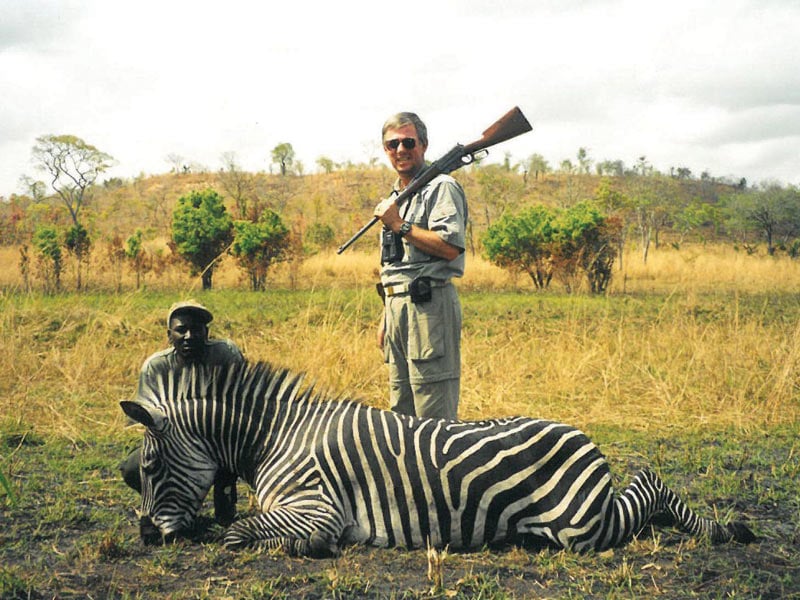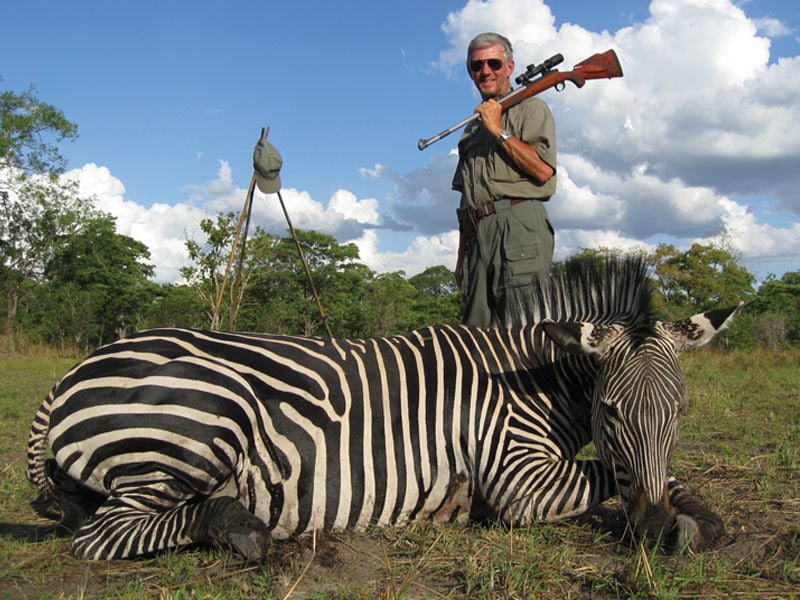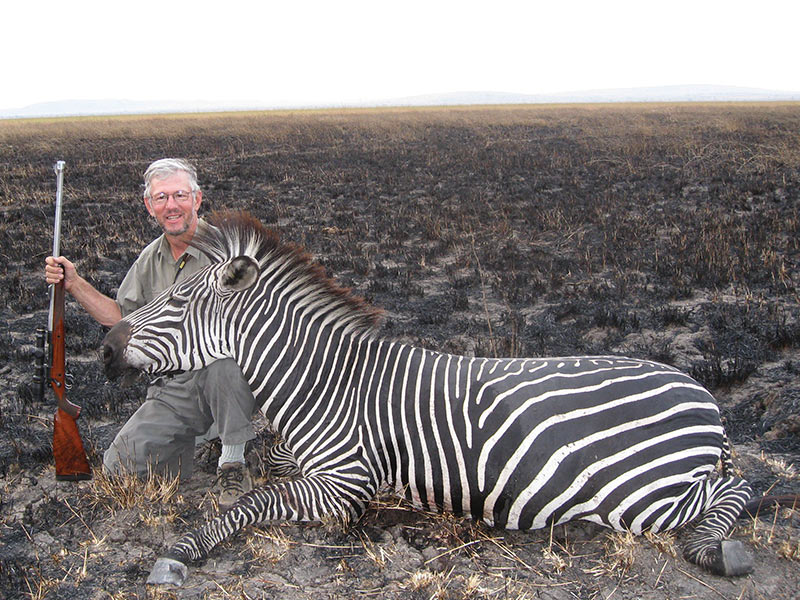Zebra!

White with black stripes or black with white stripes; that idea never crossed my mind when I lined up on his left shoulder and squeezed the trigger. The herd was in a small, burned area, with the male off to the right – and we had quietly made our approach through the tall grass, on hands and knees. I wanted to get within 100 yards, as my rifle had open sights -- but at 125 yards we ran out of cover.
It was a kneeling shot; the PH kept the sticks together and stood them on end. I grabbed them with my left hand, laid the rifle across my wrist for support - and took the shot. The zebra dropped in his tracks and the PH exclaimed, "Great shot!"; but I said, "No, if I had hit my aiming point, he would have ran 50 yards." Indeed I had pulled a few inches to the left and hit him in the neck – 125 yards is a long way, with the original sights of an 1895 Winchester.

The zebra is one of the grandest trophies of Africa, whether displayed as a shoulder mount, or made into a rug for the floor or a wall. They all look alike at first glance, but upon closer examination, each has a different pattern to the stripes. Everyone recognizes the stripes of a zebra, but only those who have hunted them understand how great a trophy they really are. Yes, they are abundant in most of the hunting areas of Africa, but are almost always challenging to hunt - because they see and hear so very well.
They are herd animals, typically 6-10 in a group – mares, foals, and one adult male (stallion). Sportsmen only shoot adult males. There isn’t much difference in size between males and females; the animals always seem to be shifting about, and it’s often a challenge for the PH to pick out the male – except, of course, in those instances when it’s possible to view them from behind.
People who have never hunted zebra tend to think of them as domesticated horses and can’t imagine why anyone would want to shoot one. Actually, they are part of the horse family, but are very wild and don’t lend themselves to domestication. For me, hunting zebra is one of the many reasons I go back to Africa.

